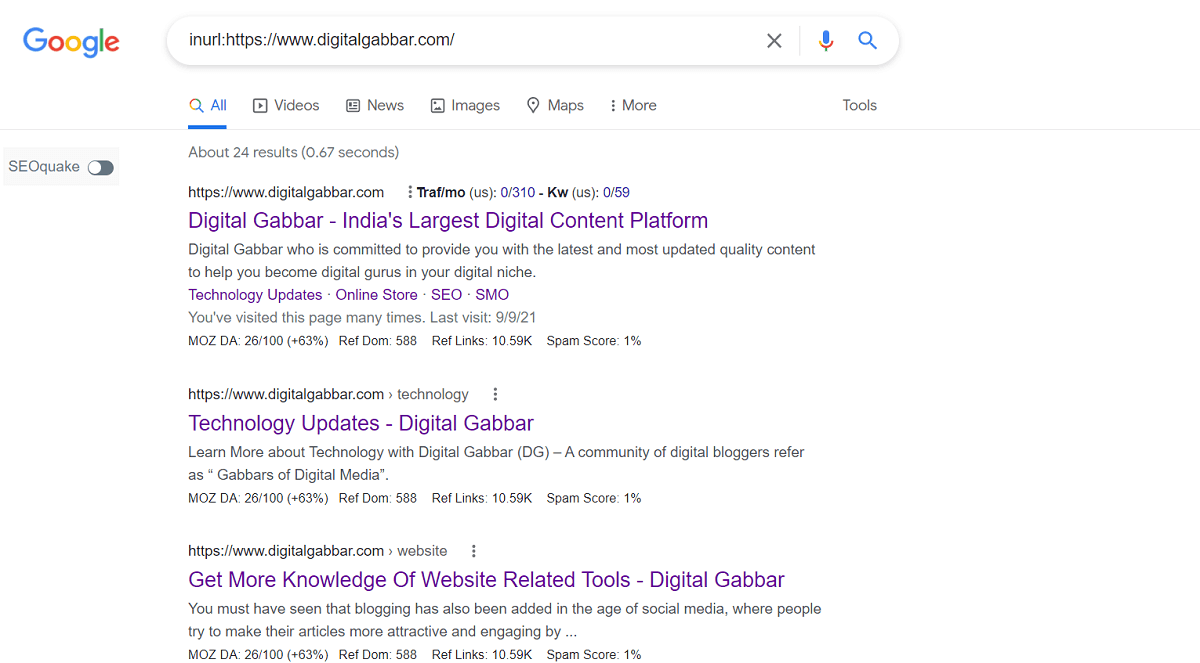The original publication date is usually included in the body of the article or blog. However, if the publication date is not available/provided, or if you believe the written time is erroneous, Google is the key to completing our query’s journey. Google can tell you when a web page was originally published on the Internet. You can find the publishing date of web pages or websites using a simple Google trick.
Any web page that is public on the Internet, or you can say published on the Internet, has three dates associated with it:
1. The indexed date — This is when search engine crawlers, such as Google or Bing Bot, first discover that web page on the Internet. It’s because Google has gotten so good at everything. Google is so good at crawling new content that the date of the first crawl coincides with the date of publication.
2. The publication date – The date on which an article or web page is first uploaded (published) to a public website. Where that page can be found and accessed by everyone (including search engines and people).
3. The cache date — This was the most recent time the Googlebot crawled a website. If the website is a news website, search engines re-crawl web pages every few days or weeks, or sometimes multiple times a day, to see if the material has been updated or changed.
How Do you Find the Date a Webpage was Published?
• Step 1- Go to google.com and type in the query “inurl:” operator with the website URL in the search box.
For Example, the URL of the page:
Digital Gabbar – Your Choice, Our Content
You should type the URL in Google like this:
inurl:https://www.digitalgabbar.com
After Pressing the Search button, the URL looks like this:
https://www.google.com/search?q=inurl:https://www.digitalgabbar.com
All pages with the URL https://www.digitalgabbar.com/ will be shown in the search results.

• Step 2 – in the browser’s address box, type “&as_qdr=y15” at the end of the URL and press enter.
The as_qdr=y25 is parameter where y15 is written to see the data of last 15 years, if you want more years of data then you can change the number. For example, to see the data of 20 years, we have to write 20 instead of 15.
For Example, the URL of the page:
Digital Gabbar – Your Choice, Our Content
You should type the URL in Google like this:
https://www.google.com/search?q=inurl:https://www.digitalgabbar.com/&as_qdr=y15
• Step 3 – The same search results will appear, but the indexing date will appear before the meta description, as shown in the image below. And this is the approximate date of a web page’s publication to which you might refer.
If the article was not modified after its first publication, the date shown in Google is the indexed date, which will match the published date. If the article is updated, Google will re-index the new information, and the date displayed in the search should be considered the most recent update date.
Why Is It Important to Know the Date of Publication?
Another reason site owners look for the publication date of content is when they are migrating. Assume you have a site with individual pages you wish to convert to a blog and migrate to a new hosting platform. Migrating a content site built with Weebly to a blogging platform like WordPress is a good example.
In most cases, the publication date is not indicated on pages; however, it must be mentioned on blog posts. When migrating, you might wish to set the published date to the page’s original date rather than the current date. Using the procedure above, you may find the original published date of pages on the old site.




